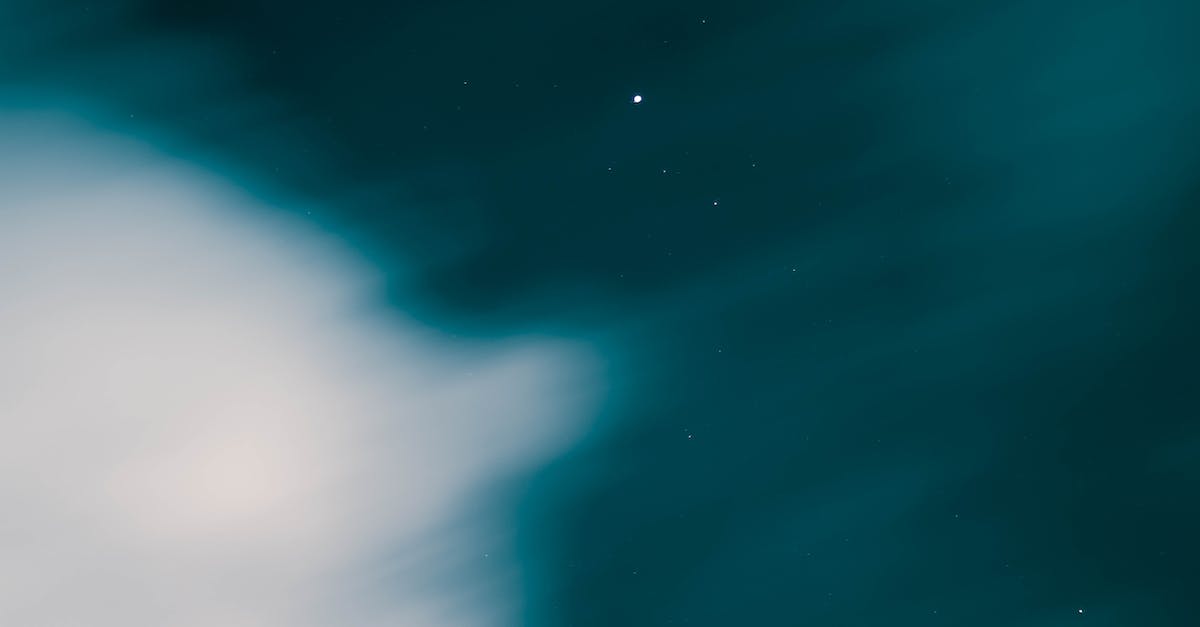This site contains affiliate links to products. I may receive a commission for purchases made through these links.
If you’re like me, there’s nothing quite like a clear, star-filled night sky. It’s a sight that can leave you in awe of the universe’s vastness. But with light pollution on the rise, it’s become harder to find places where you can truly appreciate the beauty of the cosmos. That’s where Dark Sky Reserves come in.
These are areas recognized for their exceptional starry nights and nocturnal environment. They’re specifically protected for their scientific, natural, educational, and cultural value. So, if you’re yearning for a celestial spectacle, you’re in the right place.
What are Dark Sky Reserves?
As a stargazing enthusiast, I’ve come across the term ‘Dark Sky Reserves’ quite often. So what are they exactly?
These are places where the night sky is safeguarded from the mechanical glares and artificial light pollution that tend to overrun our modern existence. Dark sky reserves are recognized for their brilliant starry nights. Preserved and protected for their scientific, educational, cultural, and natural value, they are places where you can truly appreciate the night sky in all its glory.
Promoted by the International Dark Sky Association (IDA), dark sky reserves seek to ensure minimal lighting within specified areas to provide pristine celestial views. The IDA categorizes dark sky places into different types, including sanctuaries, parks, reserves and communities. Out of these, reserves are usually the largest and have varying levels of night sky quality due to the different zoning within them.
What sets these reserves apart are the strict control measures to curb light pollution. These include slated guidelines for outdoor lighting, light curfews, and even the types of light bulbs used. The control measures also extend to public education and community outreach about light pollution to foster a more informed and responsible approach to maintaining dark skies.
Now that you’ve got a good handle on what dark sky reserves are, you might be wondering – where can we find these starlit treasures? Well, let’s dive in and find out where you can truly appreciate the beauty of the night sky.
Importance of Dark Sky Reserves
Moving past the concept and types of Dark Sky Reserves, we must tackle the significance these protected areas carry. Located globally, these reserves aren’t just tourist draws with crystal-clear celestial views. They serve a much greater purpose, from assisting astronomical research to preserving wildlife habitats.
Arguably, the most critical role Dark Sky Reserves play is in the realm of astronomical research. Having a light-pollution-free sky is every astronomer’s dream. It is vital for stellar observations and research. With minimal light interference, scientists can study celestial bodies’ movements, meteorological phenomena, and other cosmic events more accurately. They are, indeed, the darkened canvas where stars and their stories come to light.
Beyond the benefit to human pursuits, Dark Sky Reserves also have significant ecological value. By curbing artificial light, they foster a healthier environment for nocturnal creatures. Artificial brightness can disrupt the natural behaviors of these animals, causing them to become disoriented. The impact extends to plants, too, affecting their process of photosynthesis. In layman’s terms, Dark Sky Reserves allow Mother Nature to function precisely as she intended. It’s a true testament to the harmony between scientific progress and ecological preservation.
As a side note, but no less significant, are the cultural and educational aspects. Dark Sky Reserves promote space awareness, encouraging the younger generation to take an interest in astronomy. They are preserved pieces of our natural heritage and serve as living illustrations of how human intervention can enhance — rather than disrupt — our planet.
Switching the focus back to us humans, let’s delve into the therapeutic benefits. Research suggests that constant exposure to artificial light can result in disrupted sleep patterns and other health issues. Encouragingly, time spent under pristine night skies, like those found in Dark Sky Reserves, contribute to better sleep and overall wellness.
Between these lines, I trust it’s becoming clear why these protected zones deserve our attention and efforts. In the following sections, we’ll dive into some of the best Dark Sky Reserves worldwide that you might fancy visiting.
International Dark Sky Reserves
As we shine a light on the subject, there are numerous Dark Sky Reserves around the globe, each boasting their own unique set of features and breathtaking night skies. Some of the most recognized ones are nestled in countries like New Zealand, Canada, and the United States. These regions not only have a wealth of astronomical research opportunities, but also offer some fantastic views for anyone keen on stargazing.
Let’s begin our journey in New Zealand’s south island, with the Aoraki Mackenzie Dark Sky Reserve. This strip of land offers a stunning spectacle of the Milky Way, and its isolation from light pollution affords it remarkable clarity. It’s no wonder that it’s considered a prime territory for astronomers and enthusiasts alike.
Next, we jet off to North America, where the Mont-Mégantic Dark Sky Reserve in Canada, and the Central Idaho Dark Sky Reserve in the United States, serve as unrivaled spots for absorbing the cosmic spectacle. The Mont-Mégantic reserve, in particular, is the world’s first Dark Sky Reserve, having earned its designation in 2007. Over in Idaho, the reserve is one of the largest in the world, encompassing over 1,400 square miles and offering an unspoiled view of the night sky.
While these mentioned places have unique characteristics, all of them represent the embodiment of preserved natural beauty combined with conscious human effort. Appreciating these Dark Sky Reserves means recognizing their dedicated work to combat light pollution and help us reconnect with the universe that envelopes us. They offer more than just a pollution-free sky; they serve as reminders that we all share the responsibility to keep our night skies as pure and clear as possible.
Looking ahead, we’ll be venturing into specifics – diving deeper into the stories of each reserve, understanding their accomplishments, and exploring their ongoing efforts. It’s a fascinating journey as we uncover these celestial sanctuaries scattered around the globe.
National Dark Sky Reserves
By spotlighting three exceptional sites, I’ll be diving deeper into the subject at hand: National Dark Sky Reserves such as the Aoraki Mackenzie in New Zealand, Mont-Mégantic in Canada, and Central Idaho in the United States. They each have their unique stories, challenges, and victories, contributing significantly to the global movement against light pollution.
Aoraki Mackenzie, New Zealand
The Aoraki Mackenzie Dark Sky Reserve sits in New Zealand’s South Island, a site of pristine night skies. Notoriously absent of light pollution and a teeming hub for astronomical research, it’s also home to the world-renowned Mount John Observatory. The commitment of local communities has been instrumental in its preservation. Thus, it serves as a stunning reminder of what collective efforts can achieve.
Mont-Mégantic, Canada
Heading over to North America, we find the Mont-Mégantic Dark Sky Reserve beautifully nestled within Quebec’s forests in Canada. It’s a premier site, earning the distinction of being the world’s first-ever designated Dark Sky Reserve. Astonishingly, over 34,000 square km are protected from light pollution here, making it a sanctuary for star gazing and an inspiring figure in battling light pollution.
Central Idaho, United States
Lastly, I’ll touch on the grandeur of the Central Idaho Dark Sky Reserve. It’s a star-studded gem stretching over a whopping 1,400 square miles. Idaho’s efforts to maintain the dark skies have seen a significant reduction in light pollution; it’s become a shining — or should I say, non-shining — example of environmental commitment in the United States.
In the next sections, we’ll continue to explore more about each of these reserves. Their ongoing efforts, current projects, and future plans. The stakes are high, as these reserves not only contribute to preserving stunning views of the universe, but also play a crucial role in aiding scientific research.
Dark Sky Reserves Around the World
As we delve deeper into the realm of Dark Sky Reserves, it’s paramount to comprehend the global scale of these celestial sanctuaries. These havens of the night sky span continents, each bearing unique tales of triumph over light pollution. It’s not just about enjoying a star-studded view, but also supporting the scientific research that these reserves facilitate.
The Aoraki Mackenzie Dark Sky Reserve in New Zealand is a prominent player on the global stage. Home to the Mount John Observatory, this reserve offers pristine night skies, making it an ideal place for celestial research. Contributing to global efforts against light pollution, Aoraki Mackenzie is continually taking steps to maintain its skies’ purity and clarity.
Let’s hop across the globe to Canada, where the Mont-Mégantic Dark Sky Reserve holds the title as the world’s first-ever designated Dark Sky Reserve. With over 34,000 square km protected from light pollution, Mont-Mégantic embodies a pioneering spirit in preserving darkness. Ongoing projects here aim to intensify efforts towards a darker, starrier night sky.
Over in the United States, the Central Idaho Dark Sky Reserve is a vast expanse of over 1,400 square miles dedicated to fighting light pollution. It’s clear efforts here are making a difference. With a rigorous commitment to reducing light pollution, I’m awaiting the exciting innovations Central Idaho will bring to the table.
Now you’re probably thinking, “What’s next?” Well, stay with me because we’re about to delve into the current projects and future plans of each reserve. We’ll unravel their distinct approaches to preserving the universe’s stunning views and look at how each is furthering the cause of science.
Remember, it’s not just about enjoying the stars; each reserve is a testament to global efforts against light pollution. They’re not only providing us with magnificent views but also creating opportunities for scientific advancements and contributing to the well-being of our planet. Let’s appreciate these reserves for the crucial role they play in our world.
Conclusion
So there you have it. We’ve journeyed together through the starlit wonders of Aoraki Mackenzie, Mont-Mégantic, and Central Idaho Dark Sky Reserves. Each of these sites stands as a testament to the beauty of our universe and the fight against light pollution. They’re not just places to marvel at the cosmos, but also arenas for scientific exploration. As we look ahead, it’s clear that these reserves and their ongoing projects are vital for preserving our connection to the stars. Whether you’re an avid stargazer or a curious traveler, I hope you’ll consider visiting one of these reserves. You’ll be supporting a global movement and experiencing some of the best night skies this world has to offer. Until then, keep looking up and dreaming big. The universe is waiting for you.
Frequently Asked Questions
What is the article about?
The article discusses three top-notch Dark Sky Reserves located in New Zealand, Canada, and the United States; describing their unique features, efforts against light pollution, and impacts on scientific research.
What are Dark Sky Reserves?
Dark Sky Reserves are protected regions with exceptional night skies, where initiatives are taken to limit light pollution. They support scientific research and provide remarkable views of the universe.
Which Dark Sky Reserves are highlighted in the article?
The Aoraki Mackenzie in New Zealand, the Mont-Mégantic in Canada, and the Central Idaho in the United States are the Dark Sky Reserves featured in the article.
What makes the Aoraki Mackenzie Dark Sky Reserve significant?
The Aoraki Mackenzie in New Zealand is known for its immaculate night skies and the globally celebrated Mount John Observatory.
What is unique about the Mont-Mégantic Dark Sky Reserve?
The Mont-Mégantic Dark Sky Reserve, located in Canada, is the world’s first officially designated Dark Sky Reserve, safeguarding over 34,000 square kilometers from light pollution.
What about the Central Idaho Dark Sky Reserve?
The Central Idaho Dark Sky Reserve in the United States spans over 1,400 square miles. Its significant efforts to curb light pollution have been evident.
Why are Dark Sky Reserves important for scientific research?
Dark Sky Reserves play a crucial role in scientific research by providing optimal conditions to study astronomy and other science fields. They contribute significantly to our understanding of the universe.




